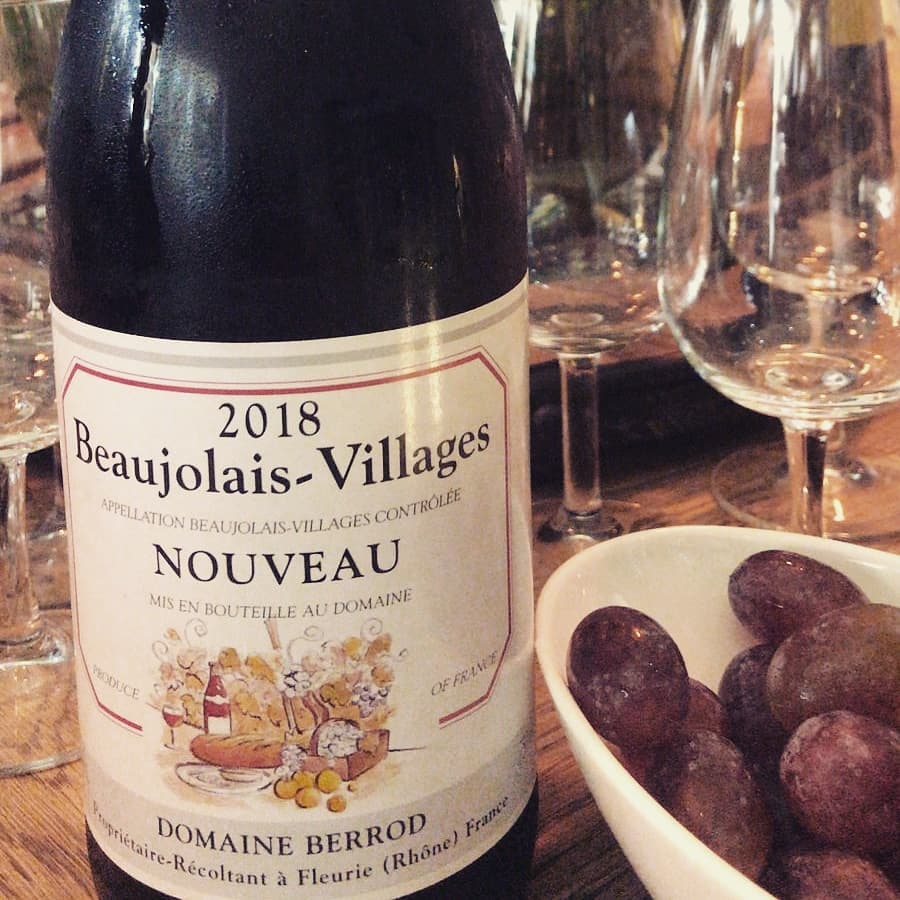Today’s the day you’ve all been waiting for. The 3rd Thursday of November can mean only one thing: Beaujolais Nouveau.
Beaujolais nouveau is made from the Gamay noir à Jus blanc grape, better known simply as Gamay. The grapes must come from the Beaujolais AOC, with those of the ten "cru" appellations excluded. They are grown in "stony, schistous soils". Both Beaujolais Nouveau and Beaujolais-Villages Nouveau are produced; the latter comes from the ~ 30 non-cru villages in the region. Nouveau's production is about 25% of overall production in Beaujolais. As of 2017, there are 2000 producers producing 27.5 million cases, with 40% exported from France.
By law, all grapes in the region must be harvested by hand. The wine is made using carbonic maceration, whole berry anaerobic fermentation which emphasizes fruit flavors without extracting bitter tannins from the grape skins. Grapes are loaded into a large (on the order of 20,000-U.S.-gallon (76,000 L)) sealed container that is filled with carbon dioxide. Grapes that are gently crushed at the bottom of the container by the weight of the grapes start to ferment, emitting more CO2. All this carbon dioxide causes fermentation to take place inside the uncrushed grapes (without access to oxygen, hence "anaerobic fermentation"). The resulting wine is fresh, fruity, and very low in tannins.

Beaujolais had always made a vin de l'année to celebrate the end of the harvest, but until World War II it was only for local consumption. In fact, once the Beaujolais AOC was established in 1937, AOC rules meant that Beaujolais wine could only be officially sold after 15 December in the year of harvest. These rules were relaxed on 13 November 1951, and the Union Interprofessionnelle des Vins du Beaujolais (UIVB) formally set 15 November as the release date for what would henceforth be known as Beaujolais nouveau.
A few members of the UIVB saw the potential for marketing Beaujolais nouveau. Not only was it a way to clear lots of vin ordinaire at a good profit but selling wine within weeks of the harvest was great for cash flow. Hence the idea was born of a race to Paris carrying the first bottles of the new vintage. This attracted a lot of media coverage, and by the 1970s had become a national event. The races spread to neighbouring countries in Europe in the 1980s, followed by North America, and in the 1990s to Asia. In 1985, the date was changed to the third Thursday in November to take best advantage of marketing in the following weekend.
This "Beaujolais Day" is accompanied by publicity events and heavy advertising. The traditional slogan, even in English-speaking countries, was "Le Beaujolais nouveau est arrivé!" (literally, "The new Beaujolais has arrived!"), but in 2005 this was changed to "It's Beaujolais Nouveau Time!". In the United States, it is promoted as a drink for Thanksgiving, which always falls exactly one week after the wine is released (on the fourth Thursday of November). Many producers release the nouveau with colourful or abstract design that changes every year, usually as an evolution from the previous year's design.
We don’t have much so do not miss your chance for a bottle of this years Beaujolais Nouveau. Cheers!